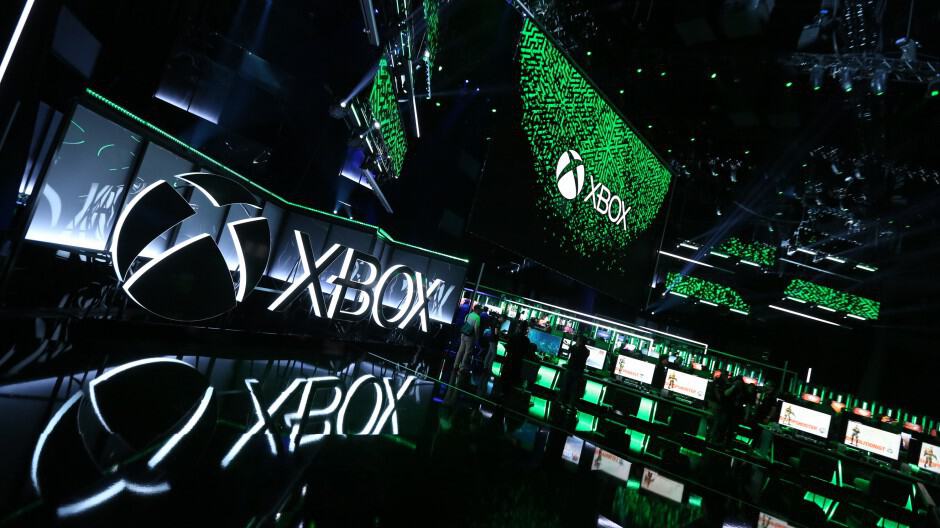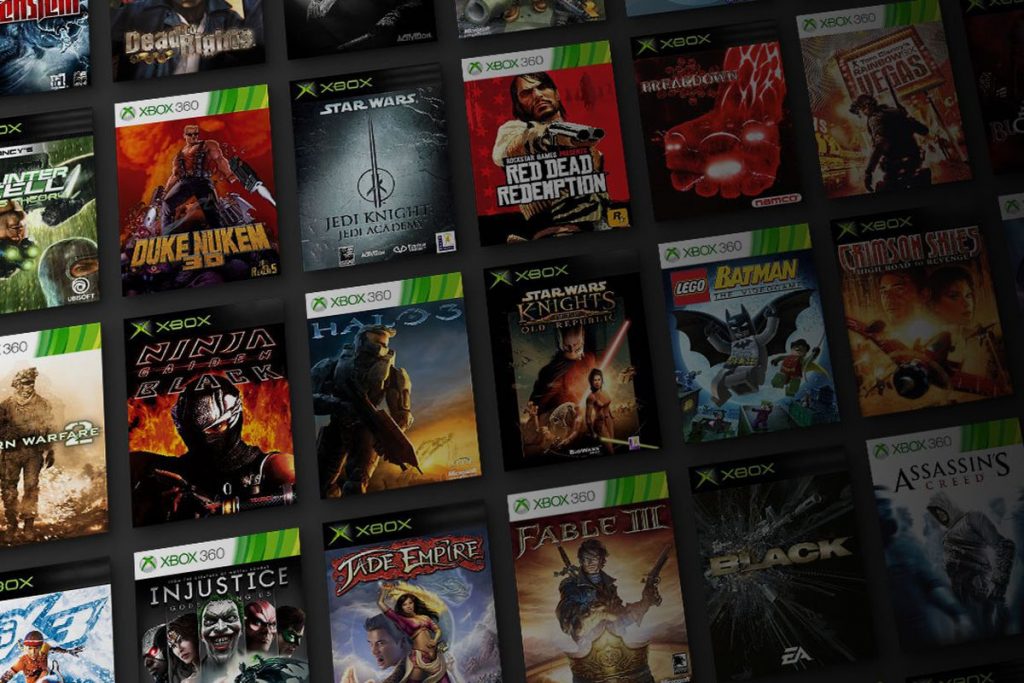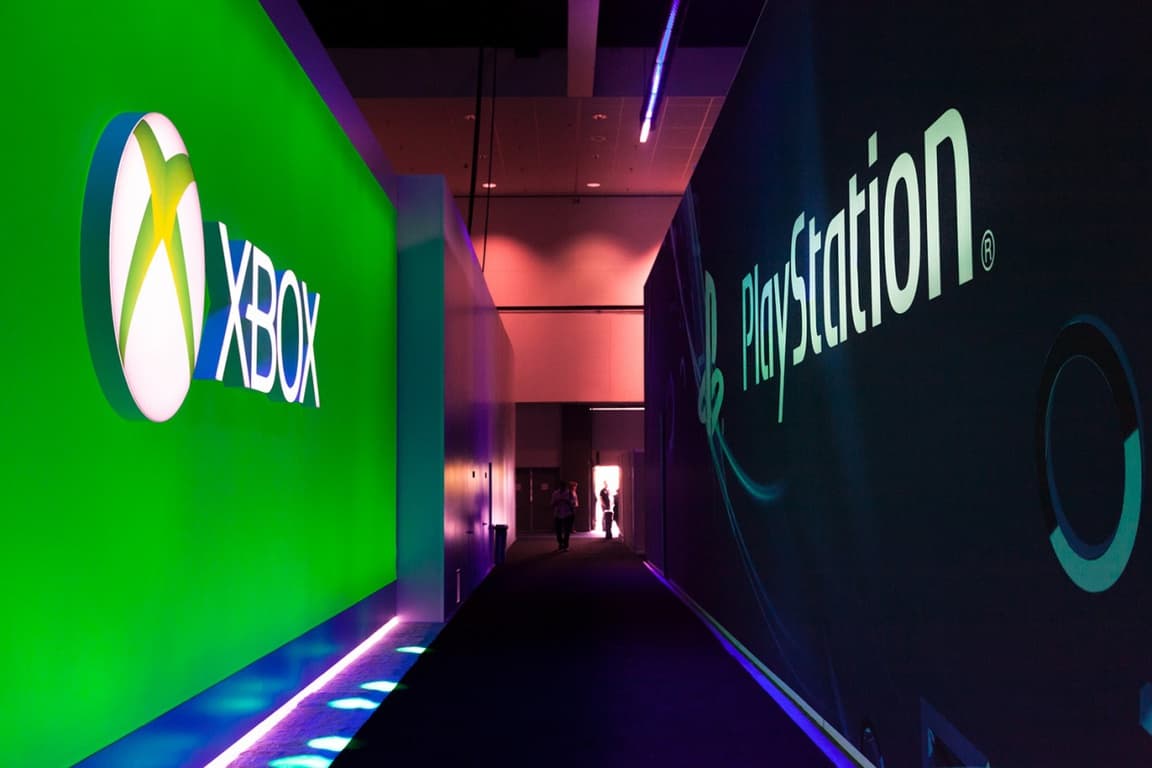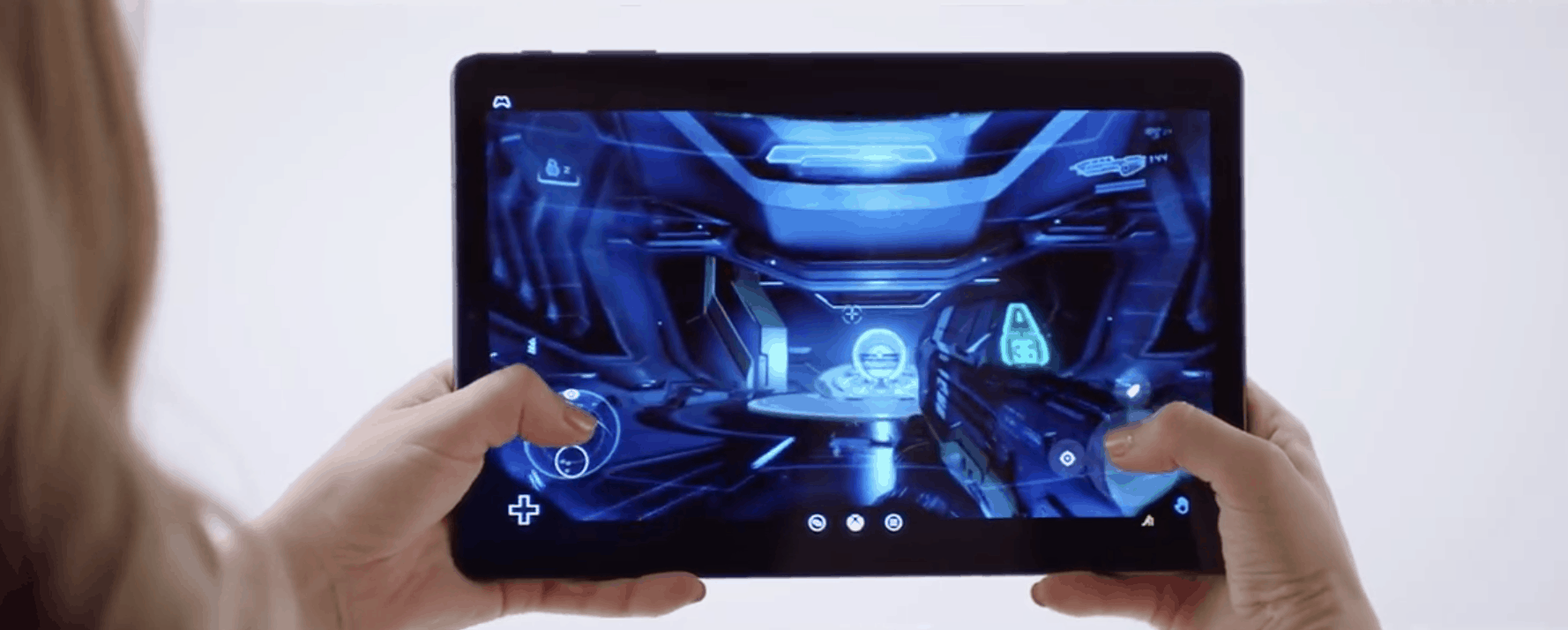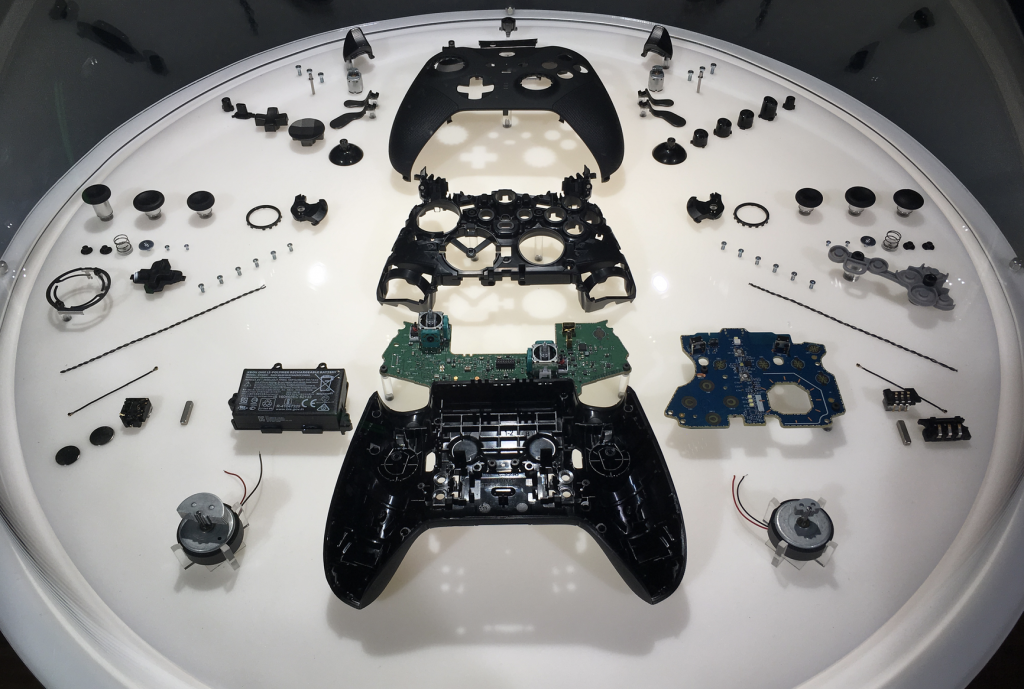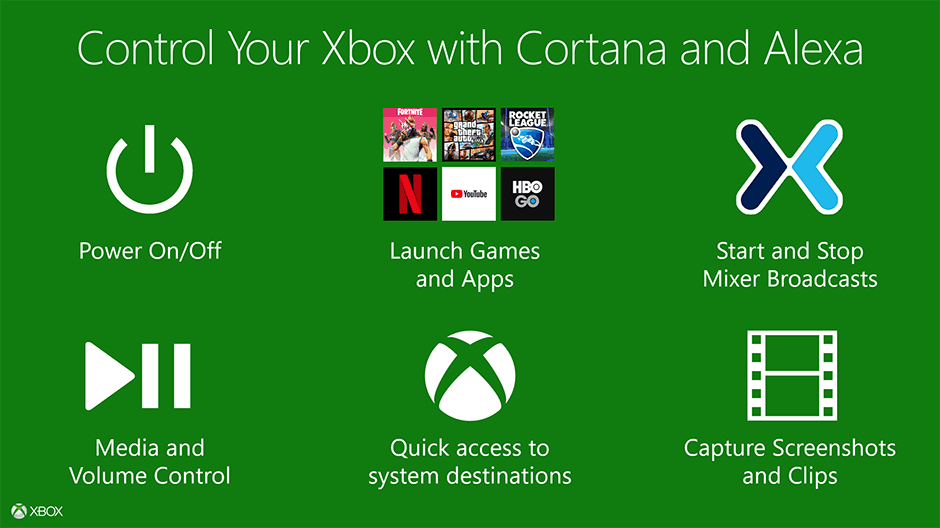Project Scarlett is the name of Microsoft’s next-gen Xbox console, to be released in holiday 2020. Xbox head Phil Spencer first discussed the new console back at E3 2019, a couple of weeks after Sony first opened up about the PlayStation 5.
2020 will see the beginning of the 9th Xbox console generation. With Sony and Microsoft both launching their new consoles in holiday 2020. The two giants may be facing some competition from Google Stadia, which had quite a rocky launch this week. Objectively, Stadia is the first 9th-gen game platform launching one year ahead of the competition, but it’s based on a cloud gaming service, not a traditional console. Early reviews suggest that Google’s game streaming technology is currently the best on the market, but it will probably be years before cloud gaming technology is good enough to replace traditional game consoles.
Since the launch of the original Xbox console back in 2001, Microsoft has become a juggernaut in the console business, even though the Xbox One has been lagging behind Sony’s PlayStation 4 from the beginning of this console generation. The Xbox One never really recovered from a disastrous launch, with the console unable to compete on price and performance with the PlayStation 4. Even the Xbox One X, released a year after Sony’s PlayStation 4 Pro, was priced $100 higher than its high-end competitor. Microsoft no longer discloses the number of Xbox One units it’s selling worldwide, but the Xbox One is now expected to end this console generation behind both the PlayStation 4 and the cheaper, less-powerful Nintendo Switch.
With Project Scarlett, Microsoft plans to build a machine that’s significantly more powerful than the Xbox One X, while providing a smooth transition for existing Xbox One owners. What we heard about the new console so far is very promising, but there are many other things we’d like to see in Project Scarlett as well. We tried to summarize everything we know about Project Scarlett below, and added some features we hope Microsoft will add to the next-gen Xbox.
What we know about Project Scarlett
Much more power than the Xbox One X
If Microsoft already has the most powerful console in the market with the Xbox One X, the software giant will definitely try to keep its crown in the 9th gen consoles generation. Both Sony and Microsoft will stick with AMD which should provide custom-designed chips for Project Scarlett and the PlayStation 5.
Back at E3 2019, Microsoft revealed that Project Scarlett with feature a customized processor leveraging AMD’s Zen 2 architecture, aided by high bandwidth GDDR6 RAM. Microsoft also highlighted its next-gen SSD which should deliver more than 40x times performance increases over the current generation.
If Microsoft has yet to share the full Project Scarlett specs, a previous report from French outlet jeuxvideo.com (via Video Games Chronicle) claimed that Project Scarlett will double the performance of the Xbox One X. The report mentioned a custom 8 core 16 thread Zen 2 CPU, a custom AMD Navi GPU delivering 12+ teraflops of power, 16GB of GDDR6 RAM, and a 1TB NVMe SSD providing 1+ GB/s of bandwidth. Take these leaked specs with the usual grain of salt, but Microsoft is certainly making sure that Project Scarlett won’t look underpowered next to Sony’s PlayStation 5.
Back at E3 2019, Microsoft also highlighted support for 8K resolution and up to 120 FPS in games, variable refresh rate, and hardware-accelerated ray-tracing. The latter is doing a great job at improving light rendering on PC games that support it, and we’re looking forward to see next-gen console games leveraging this feature.
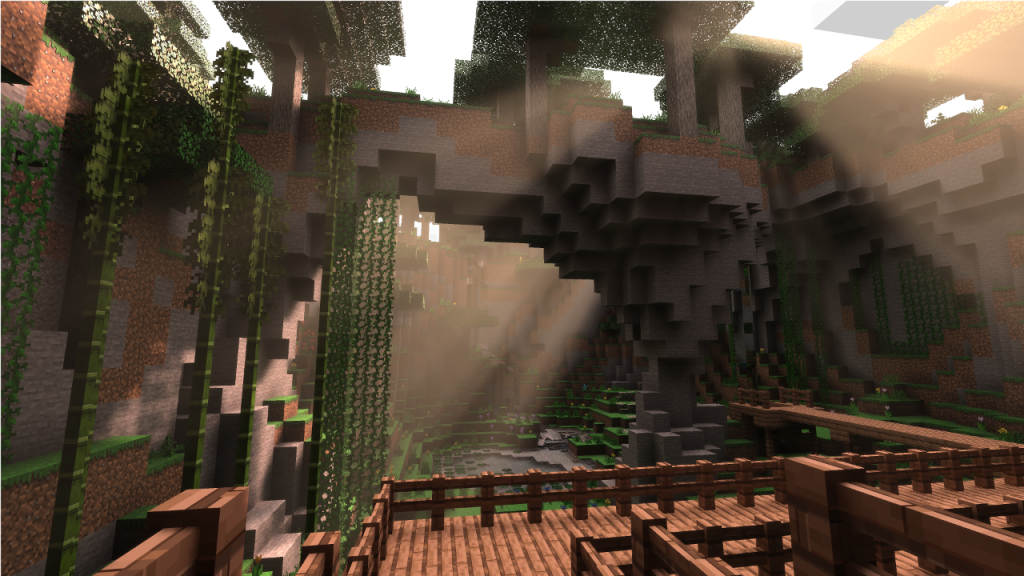
Overall, the 9th gen console generation should represent a much more significant leap compared to the transition from 7th gen to 8th gen consoles. Say what you want about the Xbox One X or the PlayStation 4 Pro, but 4K was probably the wrong target for these consoles. As we reach the end of this generation, there are still way too many games which are capped to 30FPS, which is definitely a sub-par experience compared to the smoother framerates you’ll experience in the PC world.
Gears 5, Microsoft’s latest-first party game is probably the rare exception with its support for 4K 60FPS in all game modes on the Xbox One X. However, many other first-party games, including some without photorealistic graphics like Sea of Thieves or Super Lucky’s Tale, are capped at 30FPS even on the Xbox One X. Let’s hope that the next-gen finally puts an end to 30FPS on console games.
Project Scarlett will have a Disc drive
Just like Sony’s PlayStation 5, Microsoft confirmed that Project Scarlett will come with a disc drive. This should come as a relief for video games retailers as well, which have undoubtedly suffered from the ongoing move to digital and game subscription services.
Earlier this year, Microsoft launched an experiment with the Xbox One S All Digital Edition, which is a disc-less version of the Xbox One S priced at $229. In a recent interview with Eurogamer, Xbox head Phil Spencer said that the All-Digital Edition console “is doing well,” hinting that Microsoft may not be done with the idea. “I will never remove options for us.” Spencer said in the same interview.
Project Scarlett will support Backward Compatibility
Microsoft confirmed during its E3 press briefing that Project Scarlett will be able to play games from all three past generations of Xbox consoles, and it’s probably one of the reasons why the next-gen Xbox will come with a disc drive. Microsoft also said that all existing Xbox One accessories will be supported, which is great if you want to keep using your collection of Xbox One controllers.
A couple of months ago, Microsoft announced that it would no longer add new Xbox 360 and OG Xbox games to the Xbox One Backward Compatibility list to focus on the future of backward compatibility. “Thousands of games from all four generations will be playable on Project Scarlett,” said Jason Ronald, Partner Director of Xbox Platform back in June. Hopefully, this will all existing Xbox One games, in addition to the more than 600 titles that are already backward compatible on Xbox One.
Backward compatibility is quite a fascinating feature, especially since older games now run better on the new Xbox hardware. On the Xbox One X, specifically, Microsoft has enhanced a couple of Xbox 360 and OG Xbox games to make them run with 4K assets, without requiring developers to change their code. We hope this enhancing work will continue with Project Scarlett, and it would really great if all existing Xbox One games would run better on the next-gen Xbox.
Project Scarlett will support Xbox Play Anywhere and cross-gen experiences
If Project Scarlett will be backward compatible with existing Xbox games, we already know that Microsoft is working on cross-platform experiences across Xbox One, Windows 10, and Project Scarlett. Halo: Infinite, a launch title for Project Scarlett, will also be available on Xbox One and Windows 10, and it looks like the game will support cloud saves, cross-purchases, and cross-play.
“Our goal for our first-party games is that your entitlements will be cross-generation and your Achievements will move effectively with your save game because that’s where they stand,” Phil Spencer explained in a recent interview with Stevivor. Ubisoft was the other big publisher to announce that some of its upcoming games would ship on both Xbox One and Project Scarlett, but we don’t know yet if Watch Dogs: Legion, Gods & Monsters, and Rainbow Six: Quarantine will support cross-gen experiences. This will really up to game publishers, but it would be nice to see Microsoft’s Xbox Play Anywhere initiative live on with Project Scarlett games.

Project Scarlett will be priced competitively
We all remember the Xbox One’s disastrous launch back in November 2013, when the new console was underpowered compared to Sony’s PlayStation 4, and also $100 more expensive. The Xbox One never really recovered from these early missteps, and Microsoft stopped disclosing Xbox One sales years ago.
According to Phil Spencer, Microsoft won’t reiterate the same mistakes with Project Scarlett. “I would say a learning from the Xbox One generation is we will not be out of position on power or price,” said Spencer in an interview with The Verge. “If you remember the beginning of this generation we were a hundred dollars more expensive and yes, we were less powerful. And we started Project Scarlett with this leadership team in place with a goal of having market success.”
It’s worth reminding that Microsoft will continue selling Xbox One X and Xbox One S consoles for many years, and it remains to be seen if Project Scarlett will have a higher price tag than the $500 Microsoft asked for the OG Xbox One and later the Xbox One X. “We will talk about the SKU lineup and how it works,” Spencer said to The Verge. “I think the root principle of we don’t want to confuse people, we share that.”
Project Scarlett won’t be the last Xbox console from Microsoft
With the recent launch of Google Stadia and rumors about Amazon launching its own game streaming service next year, the competition in the cloud gaming market is certainly heating up. Microsoft, which kicked off its Project xCloud public preview in the US, UK, and Korea last month, seems well-positioned against its competitors: All existing and upcoming Xbox One games will work on Project xCloud, which should really help the company to bring the Xbox experience in other places.
Still, it will likely be years before cloud gaming technology can provide a better experience than a console or a gaming PC. That’s why Microsoft made it pretty clear that Project Scarlett won’t be the last console coming from the company. “I think for years and years the best way to play a game on a console will be to download that game and play it. The same thing on PC. I think streaming is something that’s further out in terms of it becoming a really mass market where everybody is doing it, and even way further out before it’s the best way to play that game, if it ever is,” Spencer said in an interview last year.
Project Scarlett will soon power Project xCloud
Microsoft’s Project xCloud game streaming service should be seen as an extension of the company’s console business. For the current version of Project xCloud, the software giant is putting Xbox One S consoles in server blades, which means that all existing Xbox One games should work on Project xCloud without developers having to change a line of code.
Leveraging the existing Xbox One S hardware for Project xCloud means that Microsoft just needs game publishers to agree to make their games available on xCloud. Google is in a totally different situation with Stadia, which requires developers to port their games to the new Linux-based platform. Google claims that Stadia is the first next-gen gaming platform with more computing power than the Xbox One X and PlayStation 4 Pro combined, but early reviews have shown that some Stadia games aren’t running at the promised 4K/60FPS.
With Project xCloud, gamers should know that they can expect an Xbox One S level of performance: That means not the best-looking graphics you can find on consoles, as well as a 30 FPS cap on a majority of titles. This Xbox One S level of performance for Project xCloud is just the beginning, though, as Microsoft already hinted that it’s going to leverage its next-gen “Scarlett” console to beef up its Project xCloud infrastructure.
“When we talk about freedom to play, when we talk about Xbox in the cloud, when we talk about streaming your games, Project Scarlett and all of its power and all of its performance is the foundation of our future in console and the formation of our future in cloud,” Phil Spencer said in an interview during E3 2019.
Maybe Microsoft using different generations of Xbox consoles for its Project xCloud servers will allow the company to experiment with different pricing tiers for the cloud gaming service: Just like Google is offering 4K/60FPS gaming with its Stadia Pro subscription, Microsoft could offer a premium xCloud experience to consumers opting for a premium game streaming experience powered by Project Scarlett hardware.
The latest unconfirmed rumors about Project Scarlett
The cheaper “Lockhart” SKU
Since last year, there have been multiple reports explaining that “Project Scarlett” was actually two consoles, a high-end model codenamed “Anaconda,” and a cheaper model codenamed “Lockhart.” Reiterating this two-tier approach made a lot of sense following the release of the Xbox One S and Xbox One X, and Xbox’s Phil Spencer has yet to completely dismiss the existence of a cheaper next-gen Xbox console.
In the same interview with Eurogamer at X019 we mentioned earlier, the head of Xbox said that iterative updates may still happen during the lifecycle of Project Scarlett. “When we launched Xbox One, would I have predicted S would have come? Or X would have come? Or the All-Digital edition would have come, which frankly is doing well, which is good to see. We also did just ship the development kit, which is another console (…) I will say, from the launch of Xbox One, I’ve definitely learned that being too expensive and not powerful enough is not a great place to be. And price and performance are gonna be important, and we’re very focused on both of those things.
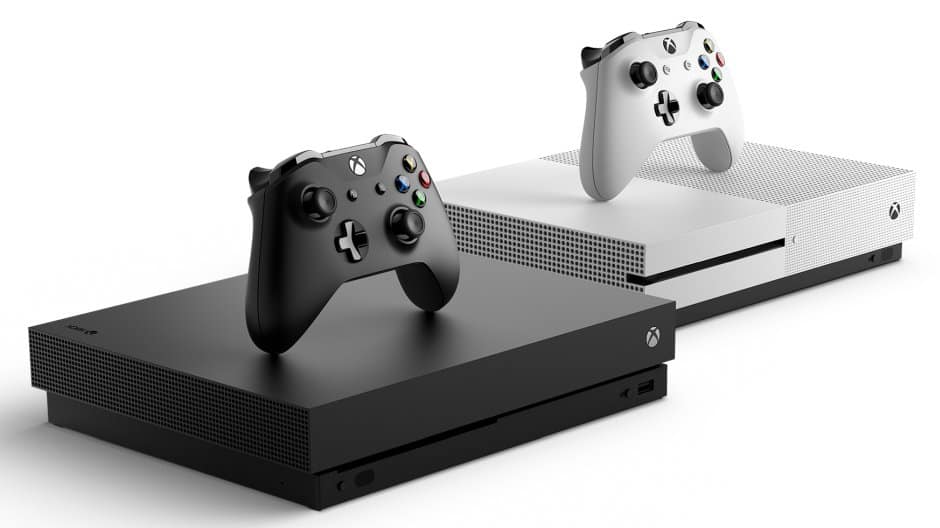
A new camera for Project Scarlett?
According to a recent report from Gizmodo, Microsoft could be working on a new high-end camera for Project Scarlett that would support streaming in 4K resolution with a two-frame latency. With Microsoft’s own live streaming platform Mixer being front and center on the Xbox One dashboard, it wouldn’t be too surprising to see the software giant release its own camera for Project Scarlett.
A Microsoft spokesperson has since denied that the company was working on new camera technology, but the same Gizmodo report mentioned that Sony is also working on a high-quality camera for its PlayStation 5. We’ll see what happens, but let’s hope Microsoft won’t have to play catch up on the camera front when the PlayStation 5 and Project Scarlett ship in holiday 2020.

What we’d like to see in Project Scarlett
Now that we’re done covering everything we know about Project Scarlett, it’s time to dive in about what we’d like to see in the next-gen Xbox console. Despite Microsoft having the most powerful console on the market with the Xbox One X, there are many things that PlayStation 4 consoles still do better, and that includes VR support, recording video game captures, live streaming, and more.
On the design side, we hope that Project Scarlett will build on the great features already found the Xbox One S and Xbox One X. These two home consoles are still the smallest on the market, and they also manage to remain relatively quiet even when playing demanding games. However, we do hope Microsoft’s Chief Product Officer Panos Panay and his talented team won’t rest on their laurels, and there are still many things Microsoft can do better in the next generation.
Making the console less dependent on Xbox Live
My first request would be to make the next-gen Xbox less dependent on Xbox Live, so you can still use it normally when Xbox Live goes down. As of today, Xbox One consoles are pretty useless during Xbox Live outages: You can’t launch any games (even solo games) or media apps, and that’s completely anachronic in 2019.
Not so long ago, Microsoft used to require an Xbox Live Gold subscription to use apps like Netflix on Xbox One and Xbox 360, and we’re really glad these times are now behind us. Overall, it’s probably time for Microsoft to rethink its whole Xbox Live Gold subscription, which is becoming more and more overshadowed by Xbox Game Pass, the company’s new game subscription service.
Make multiplayer free for everyone
I still have a hard time understanding why console gamers in general need to pay for something that’s free on all other platforms. If you have an Xbox One or Xbox 360, you need to pay a monthly subscription to play multiplayer games, even for free-to-play games like Fortnite. It’s worth noting that Sony doesn’t require a PlayStation Plus subscription (Sony’s equivalent to Xbox Live Gold) to play most free-to-play games on PlayStation 4, so I’m not sure how Microsoft, a company that’s been all-in on crossplay for quite some time, can still get away with this.
The weird thing about Xbox Live multiplayer is that it’s actually free on Windows 10 and mobile devices, but not on Xbox One. If you’re a PC gamer, you can play the multiplayer mode of Gears 5, Sea of Thieves, and more with other PC players and Xbox One gamers for free, but you can’t do this without paying for Xbox Live Gold if you’re on Xbox One.
The Bedrock version of Minecraft, which now uses Xbox Live for crossplay across Windows 10, Xbox One, Nintendo Switch, iOS, and Android, is another weird example. Again, Xbox Live multiplayer is free on all platforms except Xbox One, which really doesn’t make any sense. I’m well aware that Xbox Live servers cost money, but Microsoft isn’t asking us to pay for Skype video calls, or its Mixer live streaming service. I’m not sure why the company still keeps this paywall for Xbox One gamers, but what probably made sense in 2002 at the launch of Xbox Live doesn’t have a reason to exist anymore as a new console generation is about to begin.
Making multiplayer free on Xbox consoles could be the one killer feature that makes Xbox stand out in this highly competitive console market, and it’s certainly something that the trillion dollar company can afford. I would also add that Microsoft probably doesn’t need Xbox Live Gold anymore, now that Xbox Game Pass and Project xCloud should soon become huge moneymakers for the company.
Native integrations with Twitch and YouTube
Video game streaming is certainly something that Sony’s PlayStation did better during this console generation. Not only did Sony add a “Share” button to its Dualshock 4 controller to make it easy to take screenshots and record gameplay videos, but this same button can also be used to start streaming on Twitch and YouTube.
Both services are natively integrated in the PlayStation 4 OS, which means that you don’t need to install dedicated apps to get started. On Xbox One, only Microsoft’s Mixer service is built-in, and you need to download the Twitch app on the Microsoft Store to start streaming on the Amazon-owned platform. It’s definitely a cumbersome process for Twitch streamers (especially since the Xbox One Twitch app isn’t great), and it’s also not possible to stream on YouTube with the dedicated YouTube app.
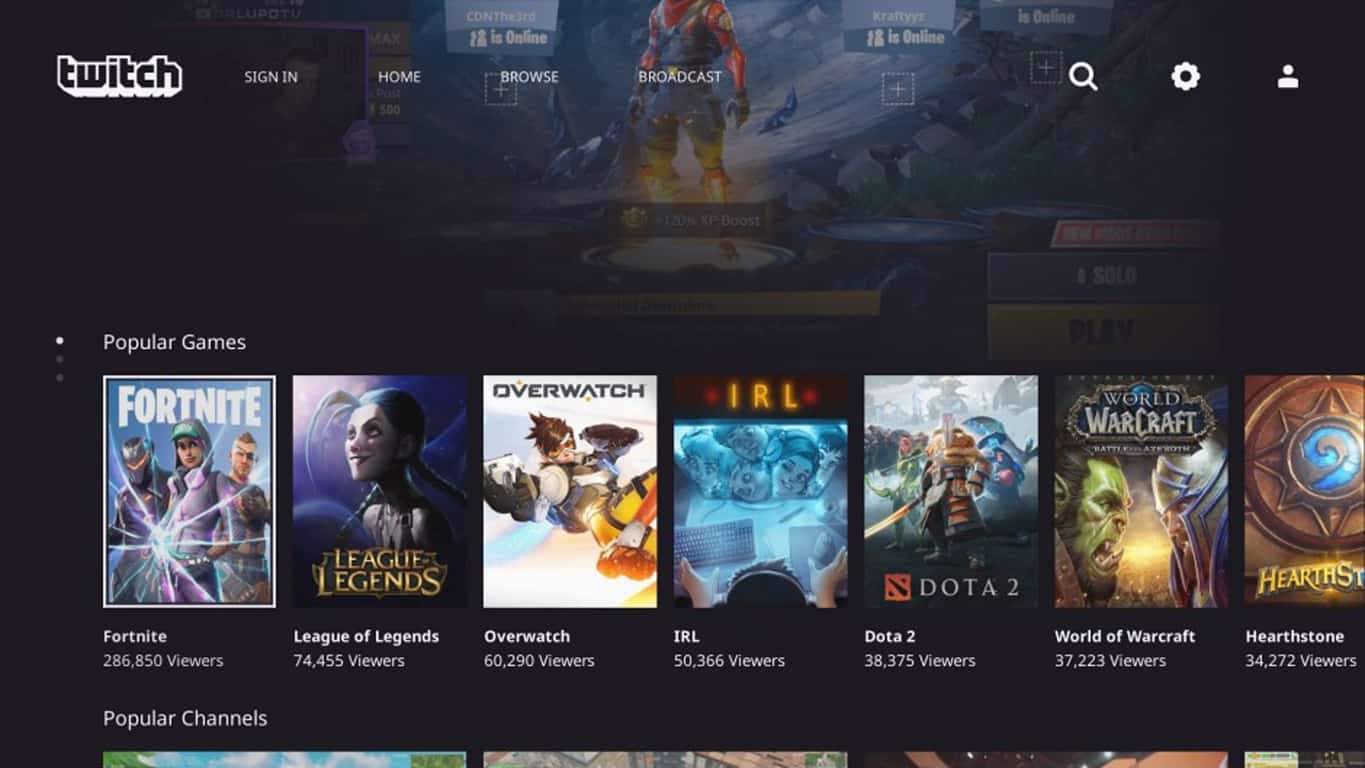
We hope Project Scarlett will finally catch up with the PlayStation side of things, especially now that game streaming has become quite mainstream. Microsoft’s Mixer may be a nice platform, but it remains tiny compared to its competitors, and most Xbox gamers are probably going to continue ignoring it in the near future.
A Redesigned controller with USB-C, Share button
The freshly-released Xbox Elite Wireless Series 2 controller is the first to come with a USB-C port instead of a micro-USB port, and we’d be surprised if Microsoft doesn’t adopt USB-C for the Scarlett controller. The new console will be compatible with all existing Xbox One controllers, but we’re quite excited about what the new Scarlett controller could bring to the table.
Microsoft reportedly spent $100 million on R&D for the Xbox One controller, which is in many ways superior to Sony’s Dualshock 4 controller: Things like impulse triggers, the proprietary Xbox Wireless protocol, and support for accessories such as the Xbox One Chatpad are already pretty great, but there’s always room for improvement.
A dedicated “Share” button is the first thing that comes to mind, but we hope Microsoft is also paying attention to what Sony and Google are doing. The latter added a dedicated button for the Google Assistant on its Stadia Controller, while Sony’s PlayStation 5 controller is rumored to feature haptic feedback and adaptive triggers. We’re quite confident about Microsoft’s design chops after trying the Xbox Elite Series 2 controller, but we hope the company will be able to design a better Scarlett controller for the rest of us.
A built-in mic for digital assistants
After Microsoft deprecated its Kinect 2.0 sensor, the company worked with Amazon and Google to add support for third-party digital assistants in the Xbox One OS. These integrations work pretty well, except that you need mobile apps or dedicated hardware to use Alexa and the Google Assistant to interact with your Xbox One.
This is something that Microsoft could fix by adding a mic to Project Scarlett, either directly on the console, or right on the Scarlett controller. Another solution would be to have a remote with a built-in mic, which could be more convenient for some users.
Microsoft really had a forward-thinking approach with Kinect voice commands on Xbox One, but what followed with Cortana voice commands wasn’t exactly as good. Bringing Alexa and Google Assistant to the Xbox One was a step in the right direction, but adding a mic to Project Scarlett looks like the logical progression.
VR Support
Unlike Sony, Microsoft completely ignored Virtual Reality during this console generation. After Microsoft launched its own VR portal on Windows 10 with the Fall Creators Update, the lack of VR support on Xbox One still feels pretty weird. Microsoft even launched a VR version of Minecraft as well as a VR Halo game for Windows Mixed Reality headsets, but these two VR experiences aren’t available on Xbox One.
Even though VR is far from being a system seller, it’s definitely something we would add to the “nice to have” category. Moreover, with Sony having already said that the PlayStation 5 will still support PlayStation VR, Microsoft once again risks ending up in a position where it has to play catch up.
Xbox’s Phil Spencer apparently isn’t to worried about it, though. “I have some issues with VR — it’s isolating and I think of games as a communal, kind of together experience. We’re responding to what our customers are asking for and… nobody’s asking for VR,” Spencer said in an interview during X019. According to these recent comments, it really looks like VR support isn’t in the cards for Project Scarlett, an if true we hope this won’t be a missed opportunity for Microsoft.
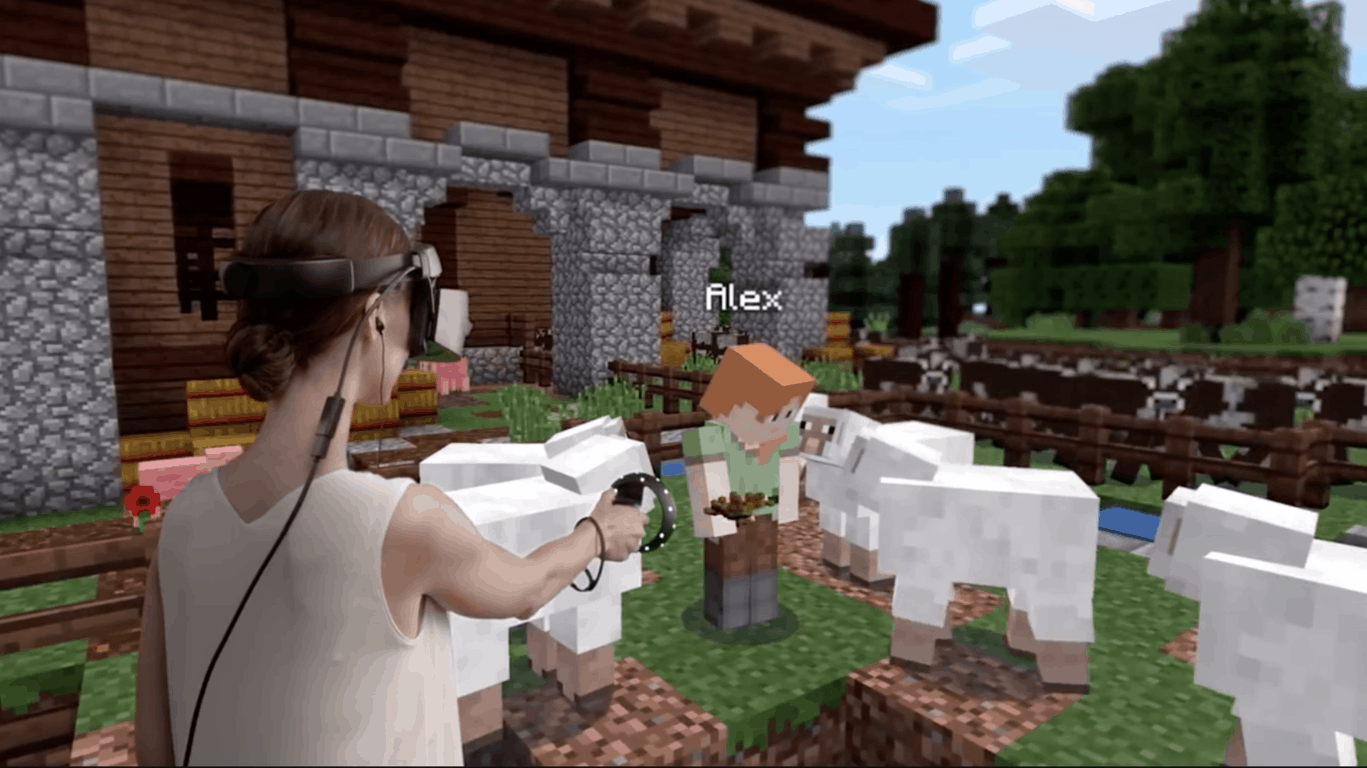
Bluetooth Support
Along with VR, Bluetooth support would be another nice to have feature that Microsoft will probably skip on Project Scarlett. The reason may be that Microsoft is already too invested in its own Xbox Wireless protocol, which many see as superior to Bluetooth. It’s certainly more reliable and more battery efficient, but the proprietary technology requires a special chip, preventing its widespread adoption.
Windows Central’s Jez Corden recently shared an explanation about why Xbox One don’t support Bluetooth, and the main reason is interferences caused by other devices. “Bluetooth is highly susceptible to interference from other devices, due to the way it continually scans for new connections. If you’re someone who wears a Bluetooth-enabled watch or uses a Bluetooth-enabled phone, simply being in range of your Xbox would impact the bitrate, and thus responsiveness, of your controls,” explained Corden.
Unfortunately, it won’t look like you’ll be able to use your favorite Bluetooth headphones with Project Scarlett, though we would love to be surprised.
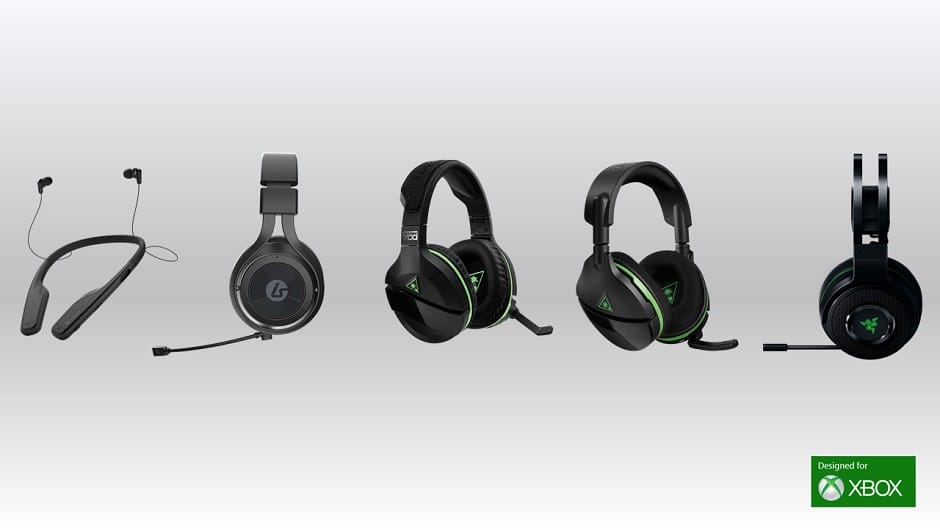
Expect more Project Scarlett news in the first half of 2020
If Microsoft’s recent X019 event in London was all about gaming news, Microsoft should finally share more details about Project Scarlett in the first half of 2020, probably ahead of E3 in June. Sony shared the first details about the PlayStation 5 before Microsoft confirmed the existence of Project Scarlett, and the competition between the two companies should become really interesting in the next couple of months.
In the meantime, we already know that Microsoft already shipped the first Scarlett dev kits to game developers, which should be hard at work on optimizing their games for the new console. We can’t wait to see gameplay footage of Halo: Infinite, which will be a launch title for Project Scarlett running the brand new Slipspace engine from developer 343 Industries. Again, the generational leap should be much more important compared to what we saw during the transition from 7th gen to 8th gen consoles, and Project Scarlett and PlayStation 5 should finally deliver PC-level graphics with support for ray-tracing and up to 120 FPS.
We would love to know more about your expectations regarding Project Scarlett. Do you have new features you’d like to see in the new console we haven’t mentioned in this post? Let us know in the comments below!


